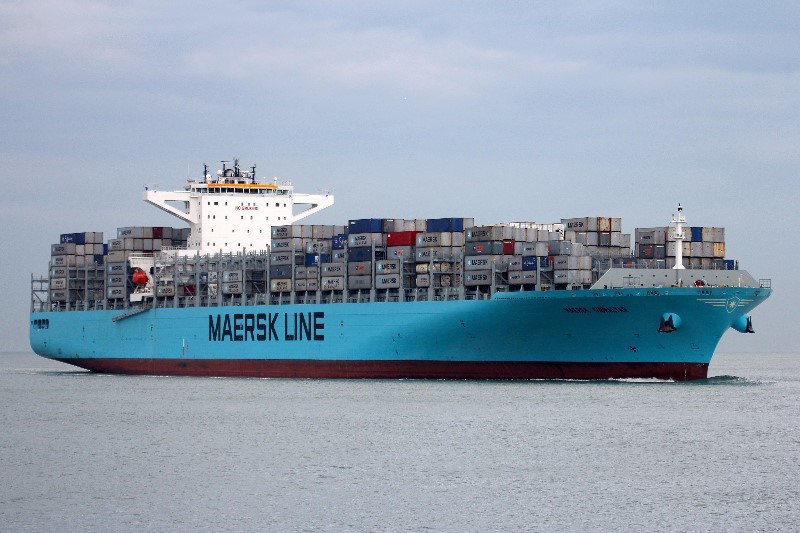
Container ships are setting new records, but for all the wrong reasons, as the vessels become an increasingly popular way to smuggle drugs.
As FreightWaves’ Mike King reported, the Maersk Gibraltar, which can carry the equivalent of 5,000 common shipping containers, was the site of the U.K.’s largest drug bust as authorities found about 1.2 tonnes of heroin, valued at $148 million.
The September bust shattered the previous U.K. record set in August of $50 million worth of heroin found in a shipping container.
That same month, Germany set its own record bust of 4.5 tonnes of cocaine found onboard an unidentified container ship at the Port of Hamburg, while another seizure of 1.5 tonnes of cocaine was made less than a week later at Hamburg.
The European Monitoring Center for Drugs and Drug Addiction said in a June 2019 report that the number of cocaine seizures and volumes coming into the continent are at an all-time high. A kilo of cocaine in Europe can fetch 25 times its wholesale price in South America, the report added.
Aside from the smugglers, innocent shippers also get caught up in seizures due to delays and the resulting investigations, said Sherhina Kamal, product director for DP DHL Group’s risk assessment unit Resilience360.
She said shipments coming from South America and other high-risk origins are likely to receive extra scrutiny, as will the carriers are unwitting accomplices in carrying drugs.
“With additional events like these taking place, there might be more checks on ocean freight coming from Latin America,” Kamal said. “The delays are minimal at this point, but given the scale and the frequency of seizures, it may change.”
The issue of cargo delays will be more critical as trade between the Euopean Union and South America is set to expand, particularly for perishable and time sensitive cargoes such as fresh fruit and agricultural goods.
The European Union, already the largest importer of fresh fruit in the world, will get even more such shipments from South America as part of a new free trade agreement signed in June.
Europe is not alone in this problem as demonstrated by the U.S.’ largest cocaine seizure taking place on the MSC Gayane in the Port of Philadelphia in June, netting $1 billion worth of the drug.
The U.S. Attorney’s Office for Eastern Pennsylvania charged its first member of the MSC’s crew, Nenad Ilic of Montenegro, with conspiracy to distribute cocaine. At least five crew members were arrested as part of the bust.
The seizure caused MSC to be suspended from U.S. Customs and Border Protection’s C-TPAT program, which provides expedited cargo processing in return for outlining how they deal with risks such as smuggling.
MSC has since been readmitted to C-TPAT. But the active involvement of a ship’s crew in smuggling, as opposed to drugs being unwittingly loaded onboard, also heightens the risk for shippers, Kamal said, as those carriers’ vessels then become targeted for increased inspections.
“What is more concerning for shippers is these major carriers being implicated in the process,” Kamal said. “If they have their preferential treatment taken away, that will add to time to clear cargo at the ports.”
CMA CGM caught in Mexico smuggling operation
Mexican navy finds 80 kilograms of cocaine on CMA CGM Mississippi World Maritime News
NYK claims carbon-neutral shipping first
Japanese shipping line buys 5,000 credits from Indian wind farm as offsets. gCaptain
West Coast ports say US is not winning the trade fight
Ports ask President Trump to reach accord with China. gCaptain

